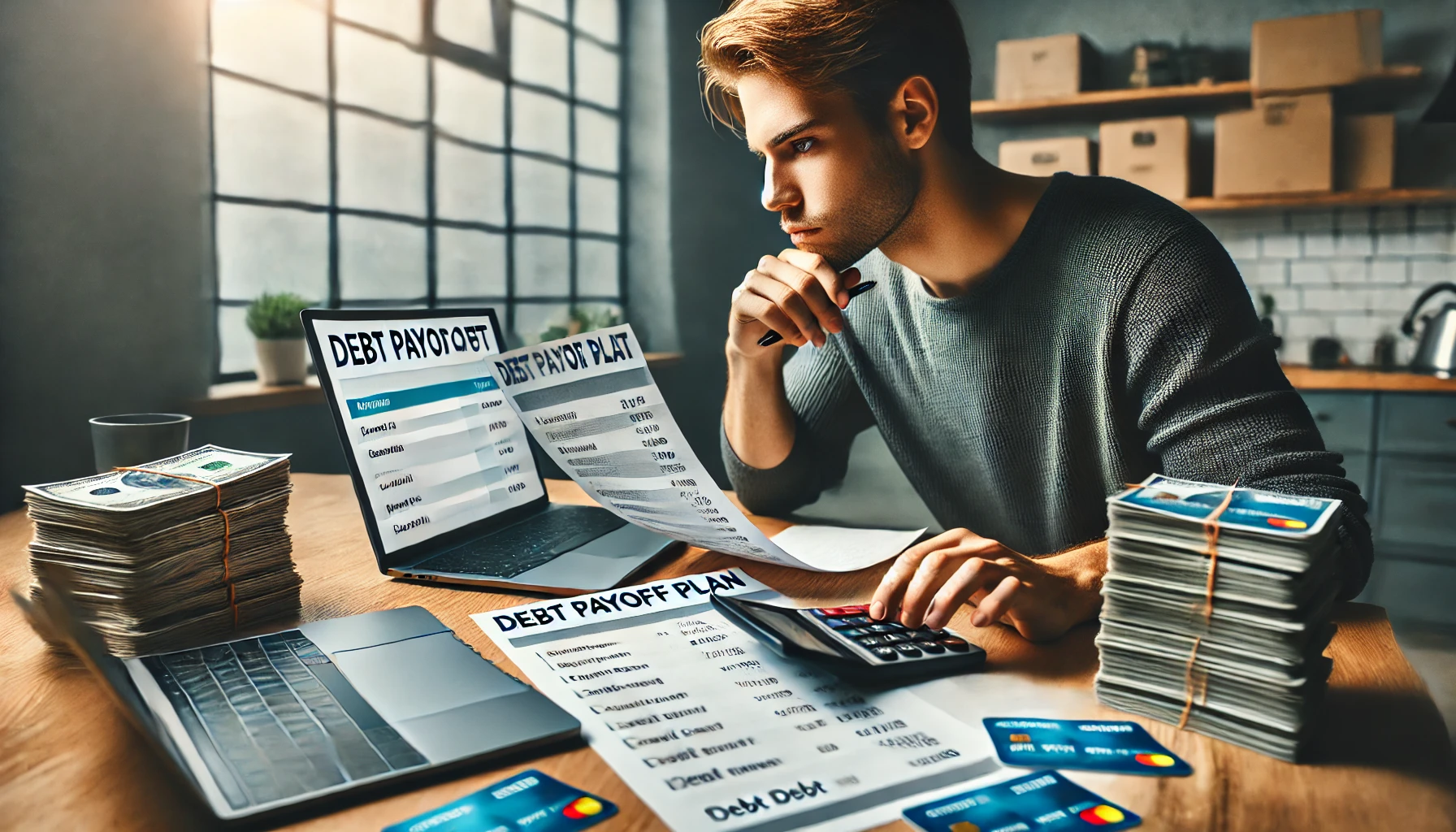Credit card debt is one of the most expensive types of debt you can carry. With high interest rates and compounding charges, even small balances can spiral out of control over time.
The good news? You can break free from credit card debt—faster than you think—with a clear plan and consistent effort.
In this article, we’ll walk through simple and realistic strategies to help you pay off your credit cards faster, reduce interest, and take back control of your finances.
Why Paying Off Credit Card Debt Matters
Credit card debt doesn’t just cost you money—it costs you peace of mind.
The consequences of carrying a balance:
- High interest charges every month
- Lower credit score
- Financial stress and anxiety
- Delays in reaching savings or investment goals
Getting out of debt gives you freedom and flexibility.
Step 1: Know Exactly What You Owe
Before making a plan, gather the facts:
Make a debt list:
- Name of each card
- Total balance
- Minimum payment
- Interest rate (APR)
💡 Use a spreadsheet or budgeting app to keep everything in one place. This gives you clarity and motivation.
Step 2: Stop Adding to the Balance
This is crucial.
If you’re still using your credit cards while trying to pay them off, you’re undoing your own progress.
What to do:
- Pause all non-essential card use
- Remove cards from your wallet or app
- Use debit or cash for daily expenses
Focus on paying down, not adding up.
Step 3: Choose a Debt Payoff Strategy
There are two popular methods. Pick the one that suits your mindset:
💥 The Snowball Method
- Pay off the smallest debt first, regardless of interest rate
- Great for motivation and momentum
- Each paid-off card feels like a win
🔥 The Avalanche Method
- Pay off the card with the highest interest rate first
- Saves the most money in the long run
- Slower progress, but better mathematically
Either works—consistency is more important than method.
Step 4: Pay More Than the Minimum
Minimum payments barely cover the interest—and keep you in debt longer.
Try this:
- Round up your payments
- Pay a fixed amount (e.g., $150/month instead of $50)
- Add “found money” like refunds, gifts, or side hustle income
Every extra dollar goes directly to the balance.
Step 5: Make Biweekly Payments
Instead of one monthly payment, split it into two biweekly payments.
Why it works:
- You make an extra payment every year
- You reduce the average daily balance
- You pay less interest over time
This small shift adds up fast.
Step 6: Use a Balance Transfer (With Caution)
If you have good credit, you may qualify for a balance transfer credit card with 0% interest for 12–18 months.
Benefits:
- Stop interest from growing
- Focus on the principal
- Pay off faster
Be cautious:
- Pay it off before the 0% ends
- Don’t add new charges
- Watch for balance transfer fees
It’s a powerful tool—but only if you’re disciplined.
Step 7: Cut Expenses and Redirect the Savings
Find one or two areas to reduce spending:
- Cancel unused subscriptions
- Cook at home more
- Limit impulse purchases
- Use cashback apps
Then take that saved money and throw it at your debt. Even $50/month makes a difference.
Step 8: Increase Your Income (Temporarily)
Sometimes the best way to speed up debt payoff is to bring in more money.
Options:
- Freelance or gig work
- Part-time side jobs
- Sell items you no longer need
- Offer local services (pet sitting, tutoring, delivery)
Use all extra earnings to make additional payments.
Step 9: Automate Payments
Avoid late fees and missed payments by setting up:
- Auto-pay for minimums (as a backup)
- Manual extra payments (for control)
- Reminders to check your progress weekly
Automation helps you stay consistent, even on busy days.
Step 10: Track Progress and Stay Motivated
Create a visual tracker or spreadsheet:
- Watch your balances shrink
- Celebrate small victories (like under $1,000!)
- Keep your “why” in sight—freedom, peace, new goals
Debt repayment is a journey. Motivation matters.
Final Thought: Every Payment Moves You Forward
You didn’t get into debt overnight, and you won’t get out overnight either—but with a focused plan, you will get there.
Choose your strategy. Stay committed. And remember: every payment, no matter how small, brings you closer to a debt-free life.
You’ve got this. 💪💳
